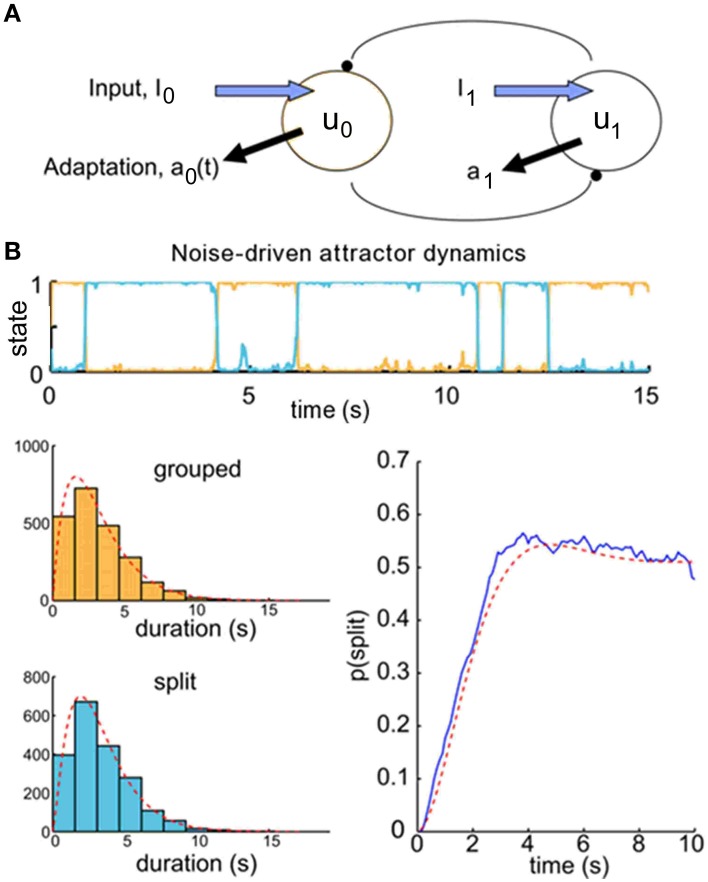Figure 4.
Buildup functions from neuronal competition model with attractor dynamics. (A) Mutual inhibition population firing rate model producing buildup. We choose initial conditions to ensure that the population representing the grouped percept, u0, is always dominant at the beginning of a given trial time course. (B) Competition model simulation results for parameters that produce attractor dynamics with noise-driven switching: γ = 0.1 and σ = 0.12. Correlations between successive durations are low (r = 0.11). Top, population activity time course for one 20-s trial. We simulated 500 trials to produce the buildup function, lower right (blue). Histograms of the dominance durations, with maximum likelihood estimated gamma density parameters (α0 = 2.02, μ0 = 3.17; α1 = 2.40, μ1 = 3.34) and the associated density functions (gray), are shown in the lower left. These parameters allow us to compute analytically the resulting buildup function for an alternating renewal process (red). The buildup function looks similar to those reported in the psychophysical literature, and the statistical model's prediction is good (R2 = 97%).

